Question ID: 1000-6478-0-3-4-5
Recipe Description
The filing for a pork pie is very simple. It is just minced or chopped pork, seasoned with salt and pepper. The type of pork can be chosen to suit your taste. Belly pork is fatty and tasty, but may be too rich for some people. In these pies, a simple shoulder joint was used. You should prepare the filling before you make the pastry, as the pastry need to be worked whilst warm. The skin was cut off, but the fat under the skin was left in. If you use only lean meat, it can be a bit dry, although it is not a big problem with this type of pie as jelly is added later anyway. The meat was choped into chunks and these passed into my favourite hand grinder - the Spong 'National', truly a prince of grinders. This model was probably made in the 1950s or so. If you don't have a mincer, you can just chop the meat by hand with a big chefs knife. Using a food processor is not recommended as it is quite easy to produce a homogenous mush instead of an even chunk size. Finally a generous amount of ground salt and black pepper was added.
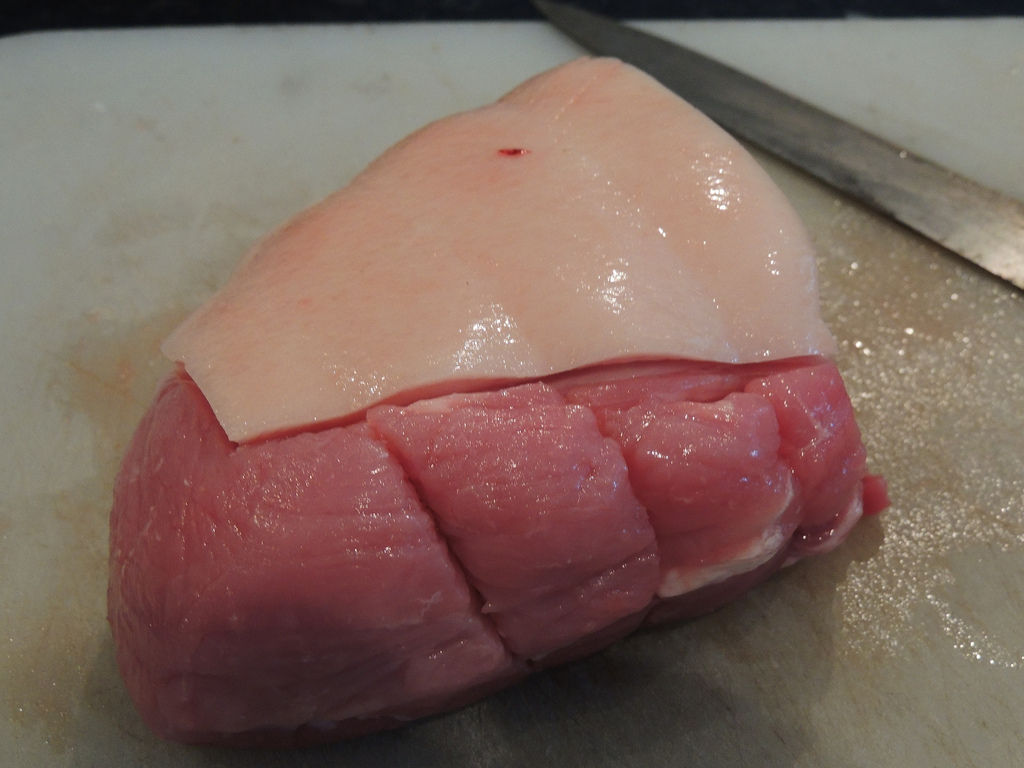
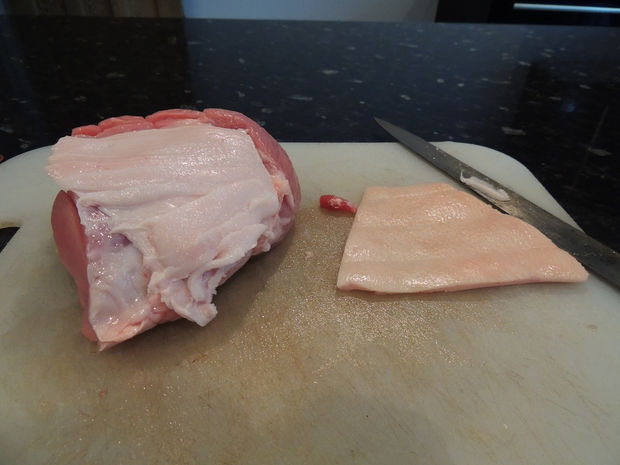
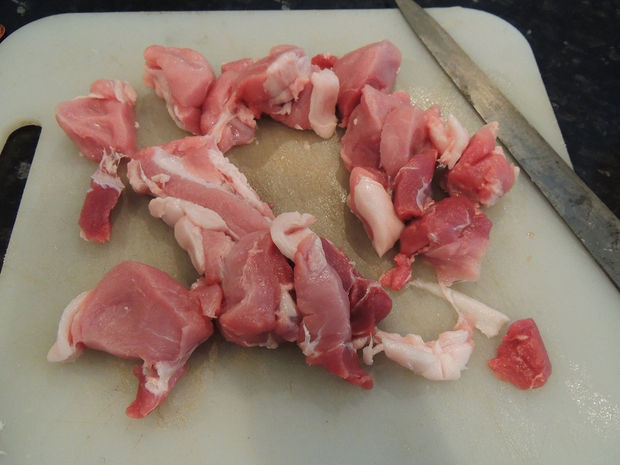
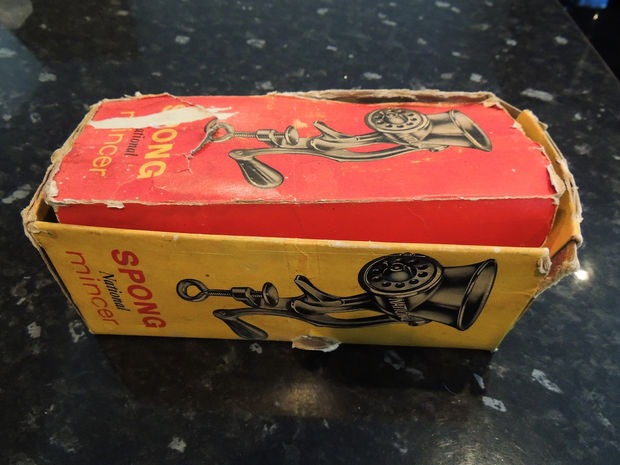
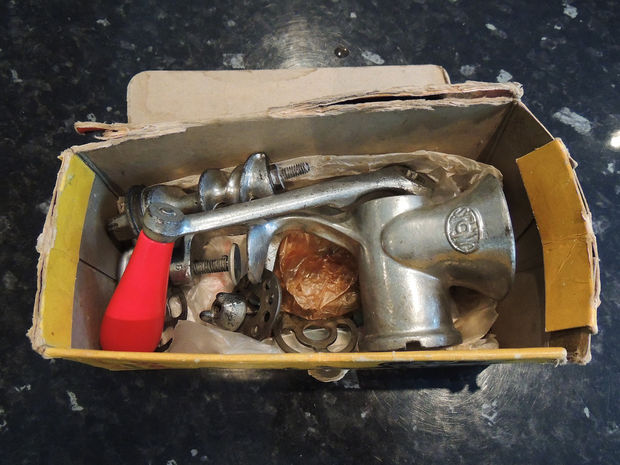
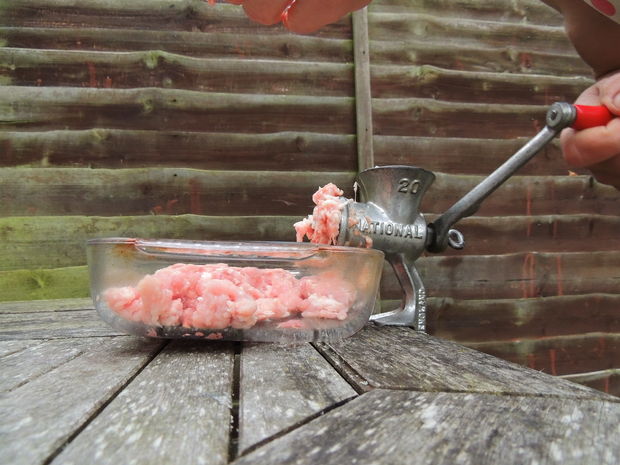






The pastry in a traditional pork pie is unusual in that it is made with hot water, not cold. This is known as a hot water crust. About 3 oz lard (hard white pork fat, although you can use beef suet too) About 8 fl oz water About 8 oz plain flour (but may vary. Add until a thick dougy paste is formed) About 1/2 teaspoon of sea salt 1 crushed garlic clove (optional, but gives it an extra warmth and richness) The water, garlic, salt and lard are added to a pan on a low heat until the fat has melted. The water should not be boiling. It just needs to be hot enough to melt the fat. The flour is then stirred in to form a paste. The paste is fairly easy to work mould into the pie moulds. Because the flour is well worked, there is a higher gluten content than normal for pastry, and the cases are less crumbly and therefore less prone to breaking. This makes hot crust pastry ideal for making cold pies intended to be carried as a snack. However, the paste only stays easy to work, when it is hot. It gets harder to handle as it cools, so making the pie cases shoul dbe done quickly after mixing the paste.
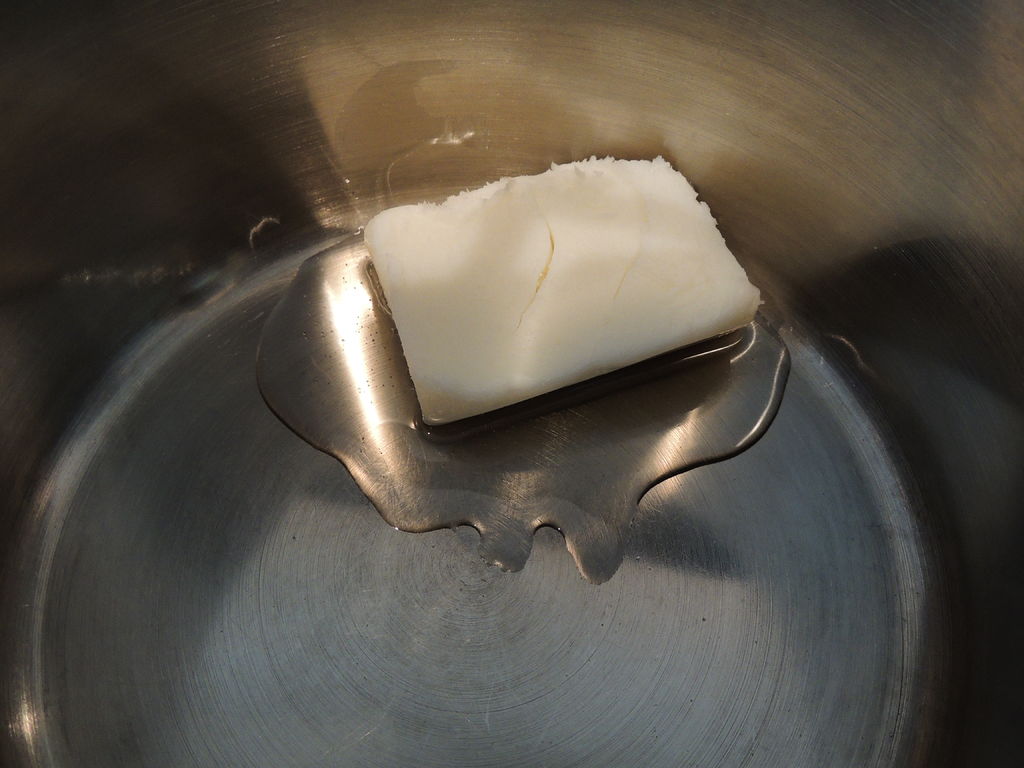
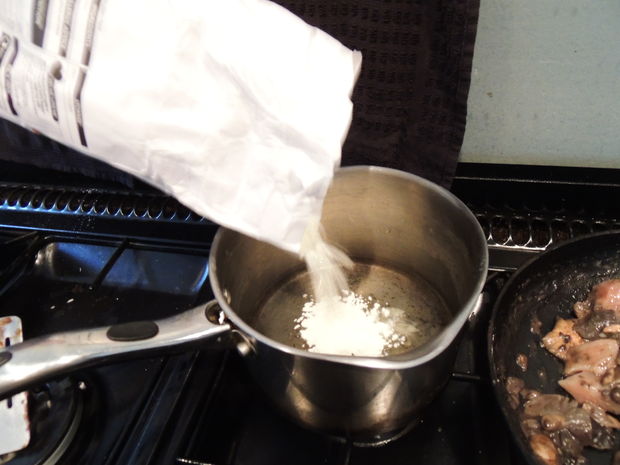
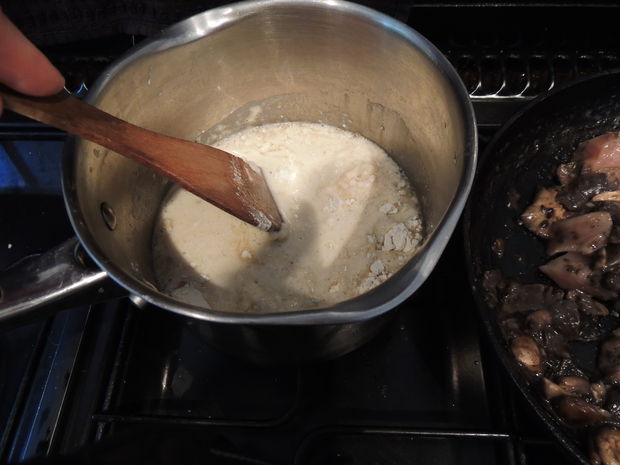
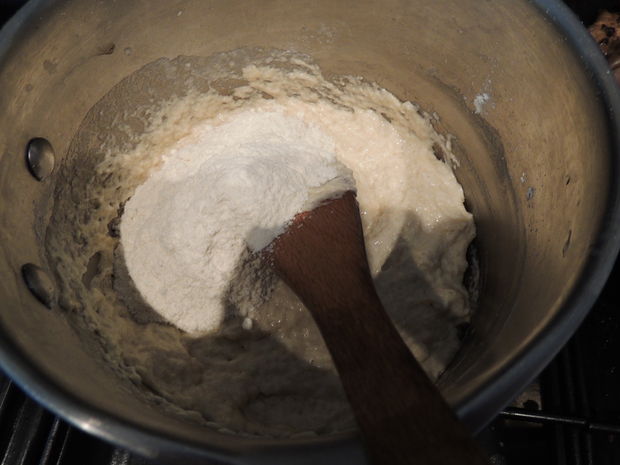
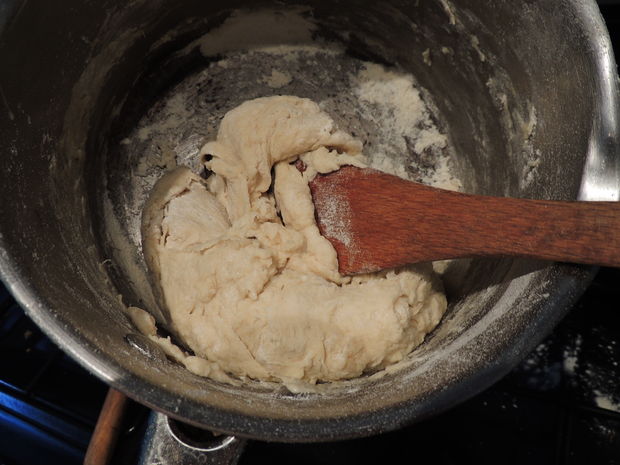
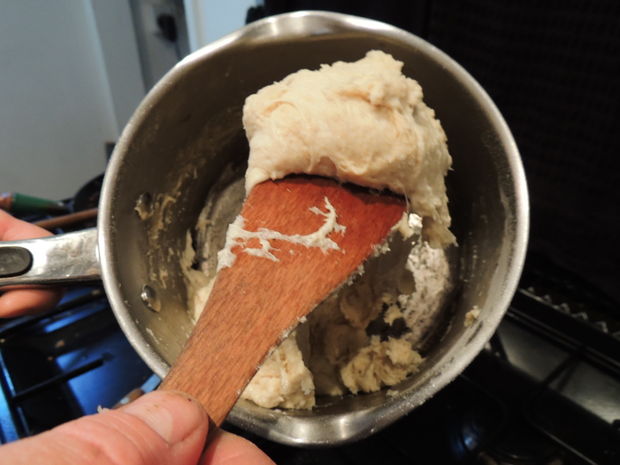






Press the warm hot water crust paste into a greased muffin or pie mould. It is easy to work in. Try to press it into and even thickness. In each paste-lined moulding, add a generou blob of the meat filling, then quickly roll out a small ball of paste into a circle to top the pie. Pinch it onto the lining paste to form a good seal. Because jelly will be added later, a central hole is cut out from each of the uncooked pies. This also allows some moisture out which helps the pie become nice and crusty as it cooks and not soggy. This is most easily done with an apple corer
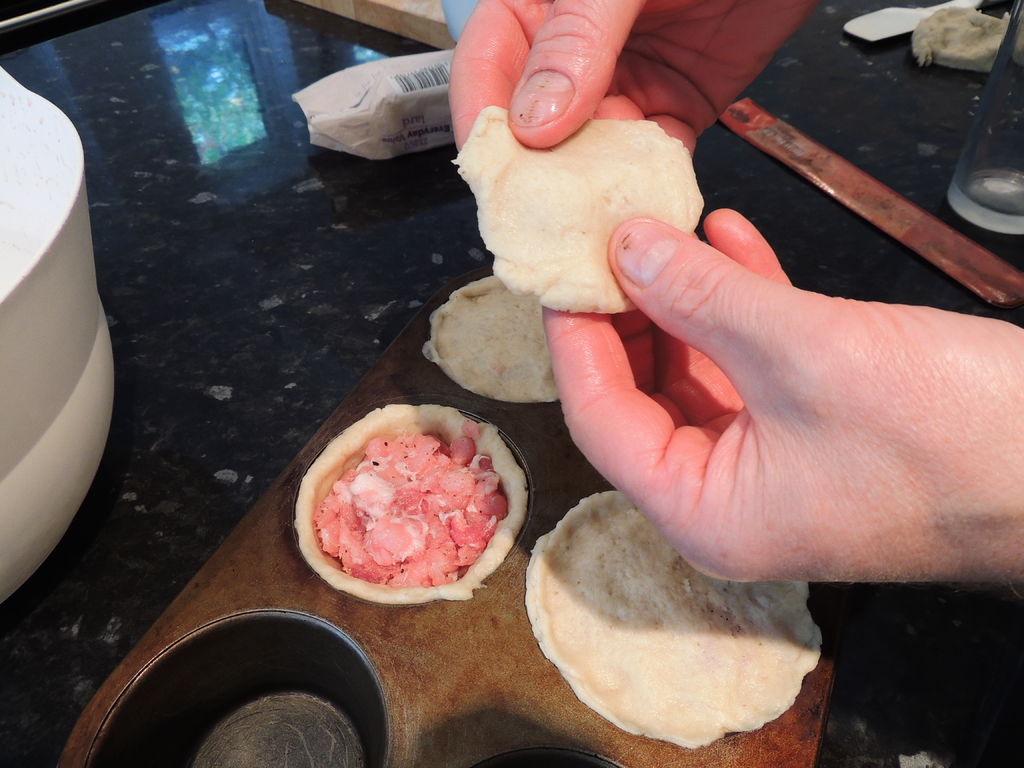
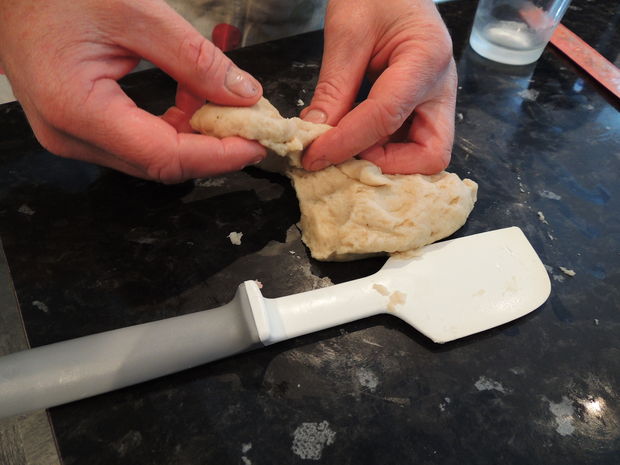
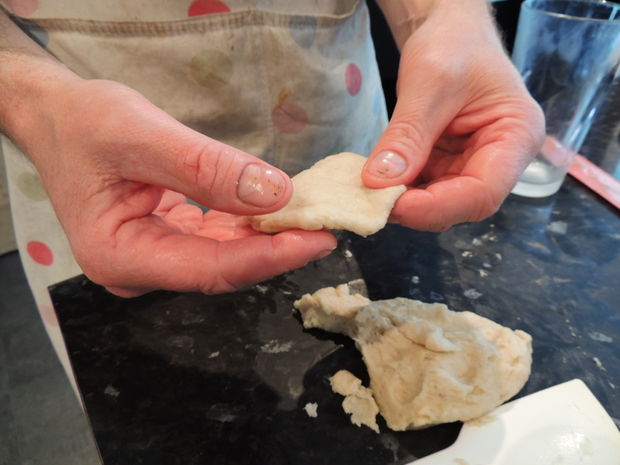
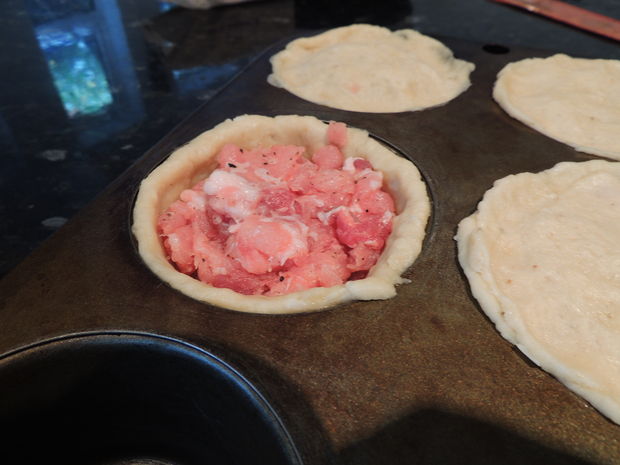
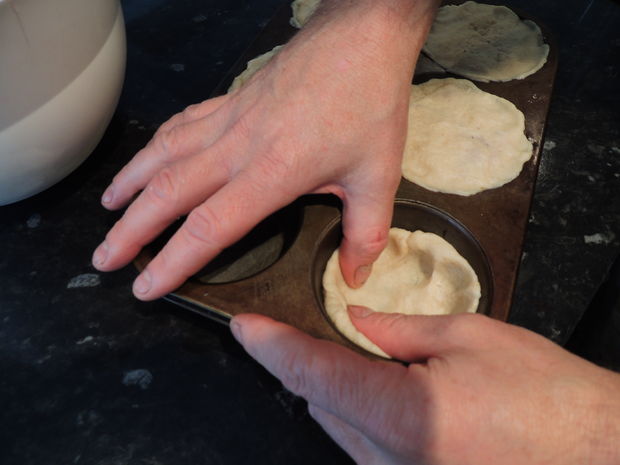
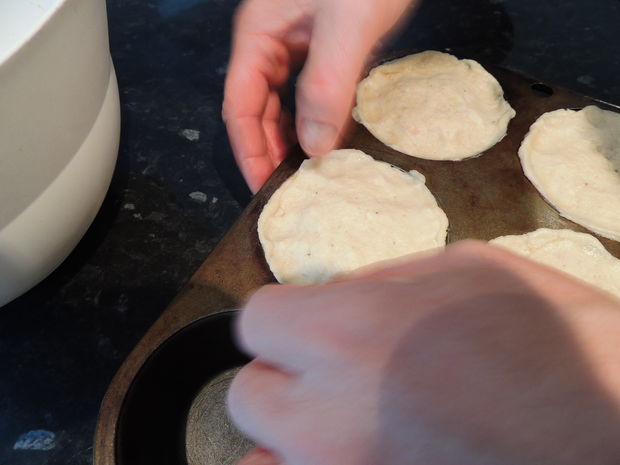






Before baking, preheat the oven to Gas mark 4 (180C/350F/). Glaze the pies with plenty of beaten egg, which has been well seasoned with salt. The pies can then simply be cooked in the oven. They take about 35-45 minutes. I normally turn the tray round after about 25 minutes to get an even bake, but I use a gas oven, so it may not be worth doing in an electric oven especially a fan oven. When cooked, you can remove from the mould if you like quite crunchy pastry on the bottom, but I prefer to leave them in the mould to cool. They are usually still crisp, but not so hard. Cooling in the mould takes a lot longer.
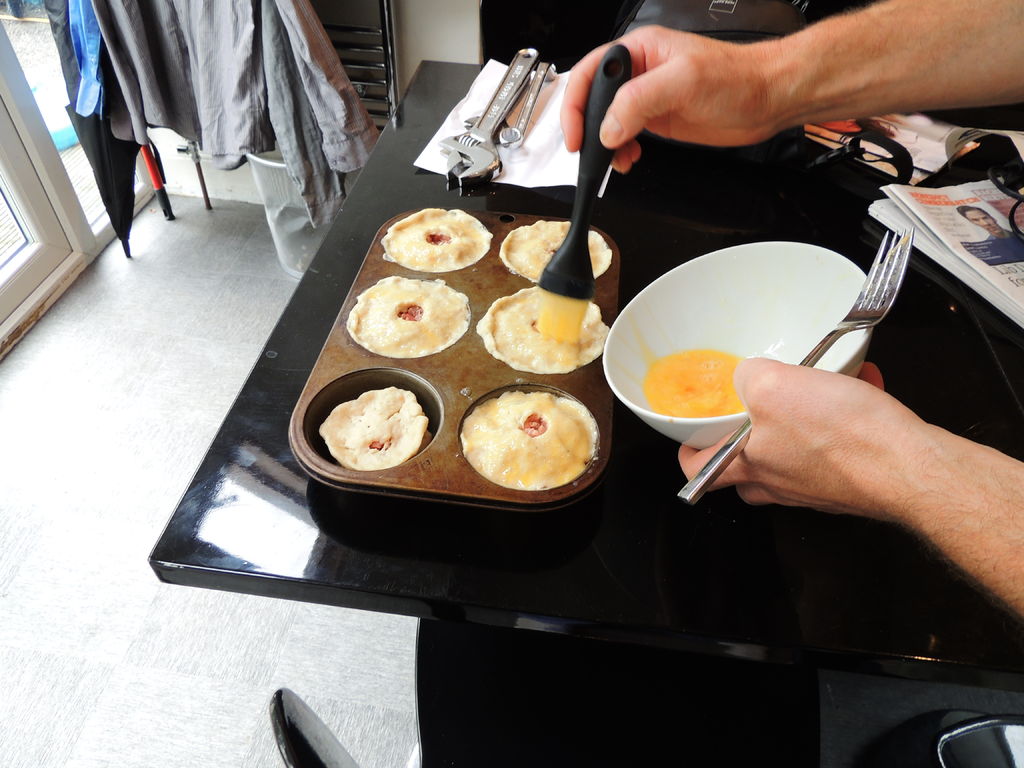
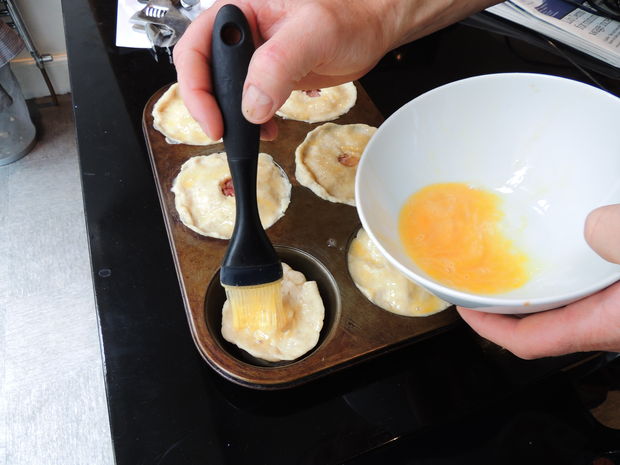
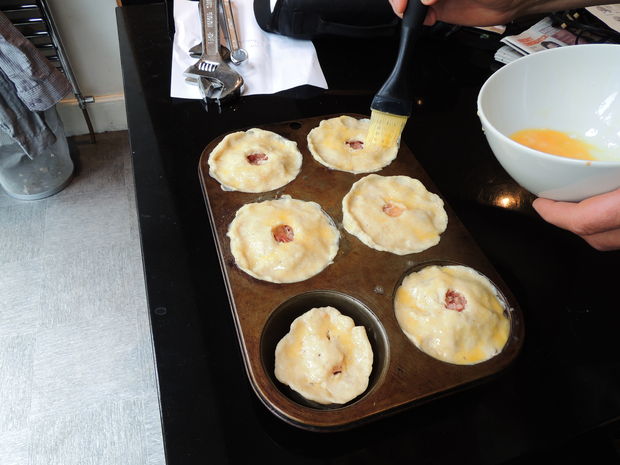



Finally, when the pies are cold, they can be topped up with jelly. This is easiest with packet gelatin, although you can boild up pig's trotters if you prefer the authentic touch. The jelly here was simply a fairly rich stock (from cubes), with slightly more jelly than the packet recommends, to make sure it is set firmly. I use about half as much again as the packet says. The jelly is poured through the holes in the pies using a jug. Each pie should be topped up until you can see jelly puddling in the hole. Leave to set. This will take several hours. Once the pies are completely cold and the jelly set, ease them out of the mould with a flexible small pallette knife and store in an airtight box in teh refridgerator. They keep for several days.
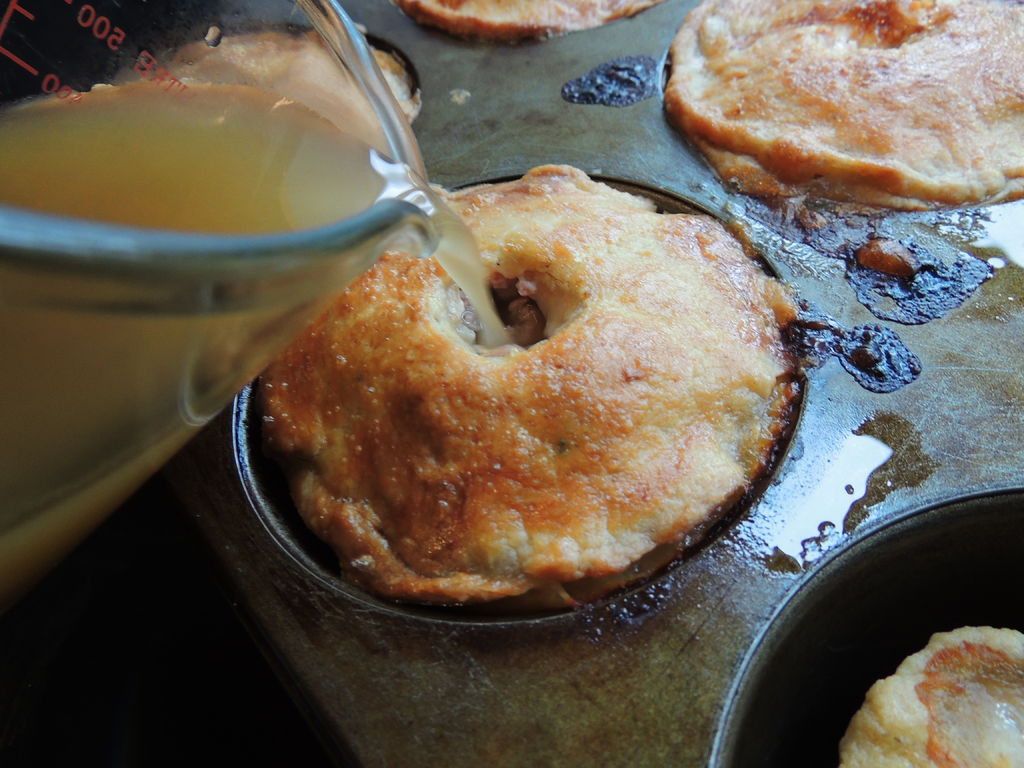
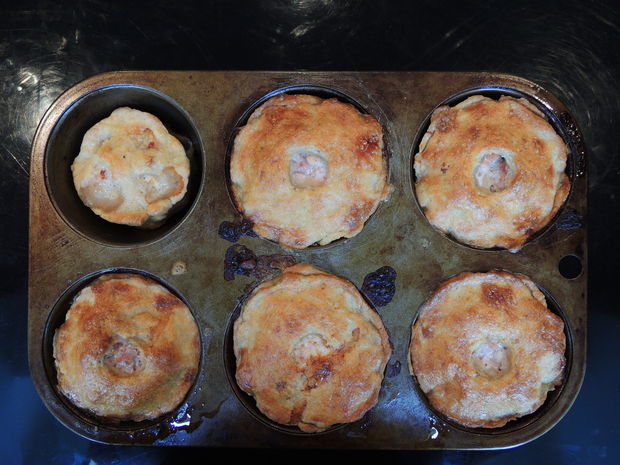
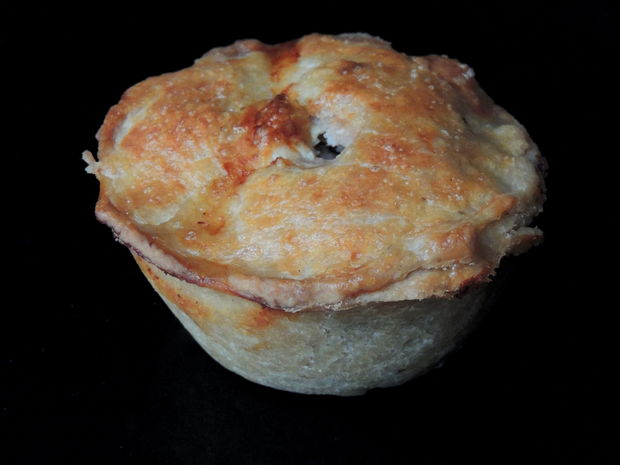
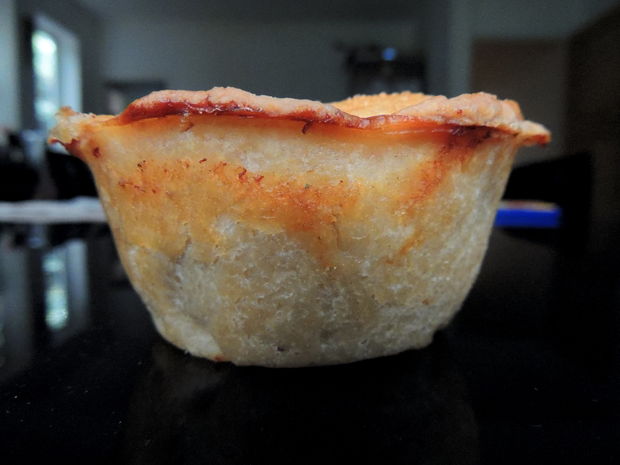
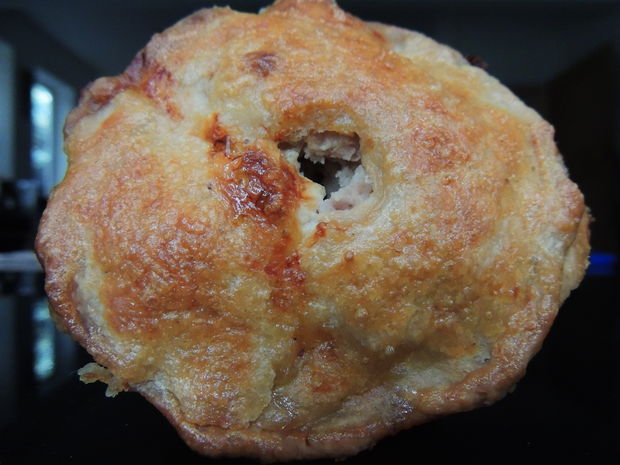





This needs no explanation, but in keeping with the tradition of pork pies, it is recommended that they be eaten as part of a picnic. This beauty is about to be scoffed in the forest in West Berkshire, England with a good hearty English mustard. Alternatively, they look rather fetching plated up too :)
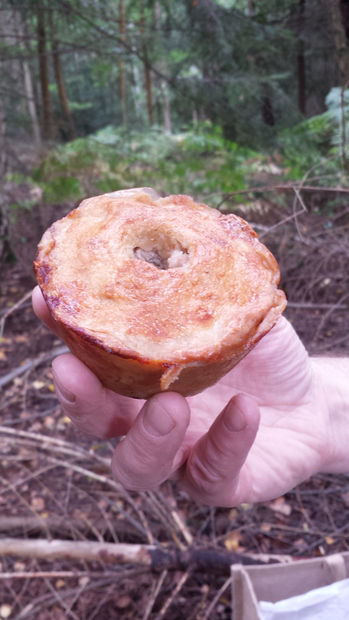
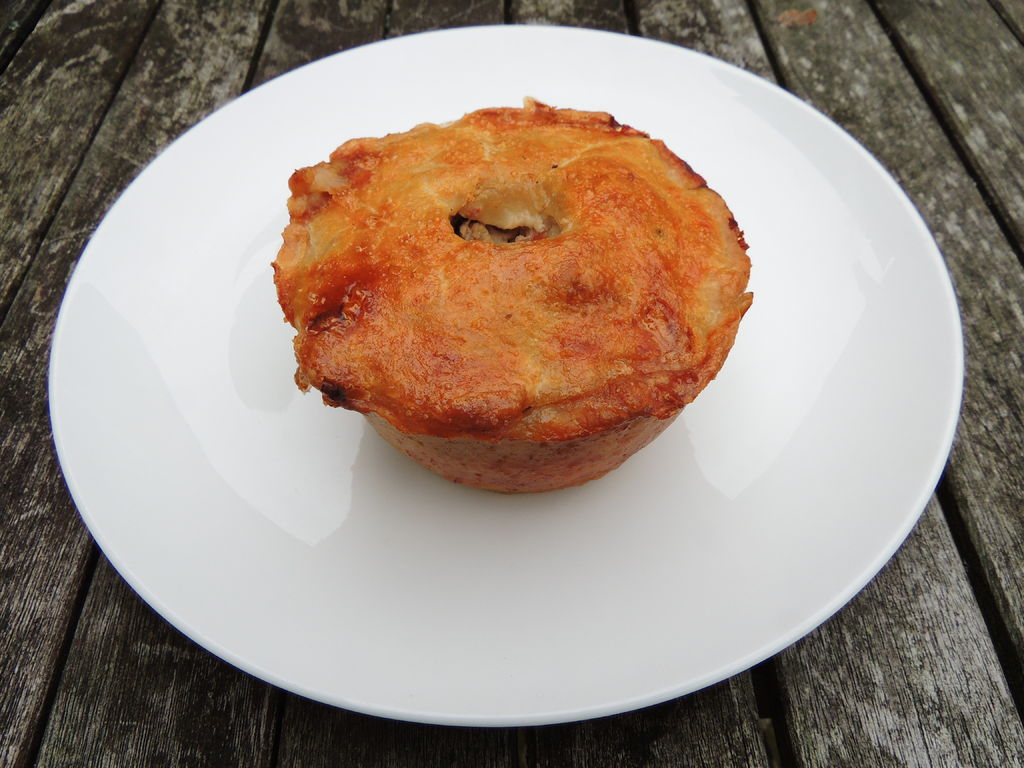


Question & Answer
Question: Choose the best title for the missing blank to correctly complete the recipe.
Making the Minced Pork Filling
Baking the Pies
____________
Eating Pies
Choices:
(A) Finishing the Pies by Adding the Jelly
(B) How to Make Sweet and Sour Pork
(C) Prepare Wrapper for Construction of Buns
(D) Prepare the Pork
 (A) Finishing the Pies by Adding the Jelly
(A) Finishing the Pies by Adding the Jelly